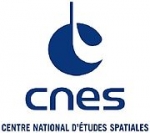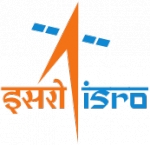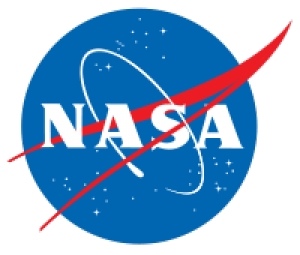Displaying items by tag: public organisation
CNES
The Centre National d'Études Spatiales (CNES) (English: National Centre for Space Studies) is the French space agency.
Established under President Charles de Gaulle in 1961, its headquarters are located in central Paris and it is under the supervision of the French Ministries of Defence and Research. It operates out of the Guiana Space Centre, but also has payloads launched from space centres operated by other countries. CNES formerly was responsible for the training of French astronauts, the last active CNES astronauts transferred to the European Space Agency in 2001.
CNES concentrates on five areas:
- access to space
- civil applications of space
- sustainable development
- science and technology research
- security and defence
Roscosmos
The Russian Federal Space Agency (Russian: Федеральное космическое агентство России Federal'noye kosmicheskoye agentstvo Rossii), commonly called Roscosmos (Роскосмос Roskosmos) and abbreviated as FKA (ФКА) and RKA (РКА), is the government agency responsible for the Russian space science program and general aerospace research. It was previously the Russian Aviation and Space Agency (Russian: Российское авиационно-космическое агентство Rossiyskoe aviatsionno-kosmicheskoe agentsvo, commonly known as "Rosaviakosmos").
Headquarters of Roscosmos are located in Moscow.
Main Mission Control space flight operations center is located in a nearby city of Korolev.
Cosmonauts Training Centre (GCTC) is in Star City.
Launch facilities used are Baikonur Cosmodrome in Kazakhstan(with most launches taking place there, both manned and unmanned) and Plesetsk Cosmodrome in northern Russia used primarily for unmanned flights of military designations.
ISRO
ISRO is the Indian Space Research Organisation.
The objective of ISRO is to develop space technology and its application to various national tasks. Accordingly, Indian Space Research Organisation (ISRO) has successfully operationalised two major satellite systems namely Indian National Satellites (INSAT) for communication services and Indian Remote Sensing (IRS) satellites for management of natural resources; also, Polar Satellite Launch Vehicle (PSLV) for launching IRS type of satellites and Geostationary Satellite Launch Vehicle (GSLV) for launching INSAT type of satellites.
The Space Commission formulates the policies and oversees the implementation of the Indian space programme to promote the development and application of space science and technology for the socio-economic benefit of the country. DOS implements these programmes through, mainly Indian Space Research Organisation (ISRO), Physical Research Laboratory (PRL), National Atmospheric Research Laboratory (NARL), North Eastern-Space Applications Centre (NE-SAC) and Semi-Conductor Laboratory (SCL). The Antrix Corporation, established in 1992 as a government owned company, markets the space products and services.
JAXA
JAXA is the Japan Aerospace Exploration Agency.
On October 1, 2003, the Institute of Space and Astronautical Science (ISAS), the National Aerospace Laboratory of Japan (NAL) and the National Space Development Agency of Japan (NASDA) were merged into one independent administrative institution to be able to perform all their activities in the aerospace field as one organization, from basic research and development to utilization. The resulting independent administrative institution is the Japan Aerospace Exploration Agency (JAXA.)
JAXA proposed its long-term vision, "JAXA2025," to realize its own mission. Under thecorporate message "Reaching for the skies, exploring space," JAXA is pursuing various aerospace fields and is striving to succeed with various research and development missions.
ESA - ESOC (European Space Agency)
ESOC is the European Space Operations Centre, one of the centres of the European Space Agency (ESA).
Since its creation in 1967, the European Space Operations Centre (ESOC) in Darmstadt, Germany, has planned missions, operated more than 60 satellites and ensured that spacecraft meet their mission objectives. The mandate of ESOC is to conduct mission operations for ESA satellites and to establish, operate and maintain the necessary ground segment infrastructure.
ESA - ESTEC (European Space Agency)
The European Space Research and Technology Centre (ESTEC) is the European Space Agency's main technology development and test centre for spacecraft and space technology. It is situated in Noordwijk, South Holland, in the Netherlands.
At ESTEC, about 2500 engineers, technicians and scientists work hands-on with mission design, spacecraft and space technology.
ESTEC provides extensive testing facilities to verify the proper operation of spacecraft, such as the Large Space Simulator (LSS), acoustic and electromagnetic testing bays, multi-axis vibration tables and the ESA Propulsion Laboratory (EPL). Prior to the launch of almost all equipment that ESA launches is tested in some degree at ESTEC.
ESA - Headquarters (European Space Agency)
The European Space Agency (ESA), established in 1975, is an intergovernmental organisation dedicated to the exploration of space, currently with 19 member states.
Headquartered in Paris, ESA has a staff of more than 2,000 (2012).
ESA's space flight program includes human spaceflight, mainly through the participation in the International Space Station program, the launch and operations of unmanned exploration missions to other planets and the Moon, Earth observation, science, telecommunication as well as maintaining a major spaceport, the Guiana Space Centre at Kourou, French Guiana, and designing launch vehicles. The main European launch vehicle Ariane 5 is operated through Arianespace with ESA sharing in the costs of launching and further developing this launch vehicle.
ESA is managing several centres distrbuted in Europe:
- ESTEC: the ESA science missions are based at ESTEC in Noordwijk, Netherlands,
- ESRIN: the Earth Observation missions at ESRIN in Frascati, Italy,
- ESOC: the ESA Mission Control (ESOC) is in Darmstadt, Germany,
- EAC: the European Astronaut Centre (EAC) that trains astronauts for future missions is situated in Cologne, Germany,
- ESAC: and the European Space Astronomy Centre (ESAC) is located in Villanueva de la Cañada, Spain.
EUMETSAT
The European Organisation for the Exploitation of Meteorological Satellites (EUMETSAT) is an intergovernmental organisation created through an international convention agreed by a current total of 30 European Member States.
EUMETSAT's primary objective is to establish, maintain and exploit European systems of operational meteorological satellites. EUMETSAT is responsible for the launch and operation of the satellites and for delivering satellite data to end-users as well as contributing to the operational monitoring of climate and the detection of global climate changes.
The activities of EUMETSAT contribute to a global meteorological satellite observing system coordinated with other space-faring nations.
Satellite observations are an essential input to numerical weather prediction systems and also assist the human forecaster in the diagnosis of potentially hazardous weather developments. Of growing importance is the capacity of weather satellites to gather long-term measurements from space in support of climate change studies.
EUMETSAT is not part of the European Union, but became a signatory to the International Charter on Space and Major Disasters in 2012, thus providing for the global charitable use of its space assets.[1]
- public organisation
- Europe
- mission operations
- satellite operator
- meteorology
- Copernicus (EO program)
- Meteosat Third Generation
- Meteosat
- Meteosat Second Generation
- MTG
- MSG
- MTP
- Meteosat Transition Phase
- METOP
- METOP SG
- Sentinel 1
- Sentinel 2 satellite
- Sentinel 2
- Sentinel 3
- Sentinel 4
- sentinel 5P
- sentinel 5
- Sentinel 6
- JasonCS
- Jason 2
- Jason 3
- EPS
- EPS_SG
- NOAA
NASA - National Aeronautics and Space Administration
The National Aeronautics and Space Administration (NASA) is the agency of the United States government that is responsible for the nation's civilian space program and for aeronautics and aerospace research.
The National Aeronautics and Space Administration is America’s civil space program and the global leader in space exploration. The agency has a diverse workforce of just under 18,000 civil servants, and works with many more U.S. contractors, academia, and international and commercial partners to explore, discover, and expand knowledge for the benefit of humanity. With an annual budget of $23.2 billion in Fiscal Year 2021, which is less than 0.5% of the overall U.S. federal budget, NASA supports more than 312,000 jobs across the United States, generating more than $64.3 billion in total economic output (Fiscal Year 2019).
At its 20 centers and facilities across the country – and the only National Laboratory in space – NASA studies Earth, including its climate, our Sun, and our solar system and beyond. We conduct research, testing, and development to advance aeronautics, including electric propulsion and supersonic flight. We develop and fund space technologies that will enable future exploration and benefit life on Earth.
NASA also leads a Moon to Mars exploration approach, which includes working with U.S. industry, international partners, and academia to develop new technology, and send science research and soon humans to explore the Moon on Artemis missions that will help prepare for human exploration of the Red Planet. In addition to those major missions, the agency shares what it learns so that its information can make life better for people worldwide. For example, companies use NASA discoveries and technologies to create new products for the public. To ensure future success for the agency and the nation, NASA also supports education efforts in STEM with an emphasis on increasing diversity in our future workforce.









